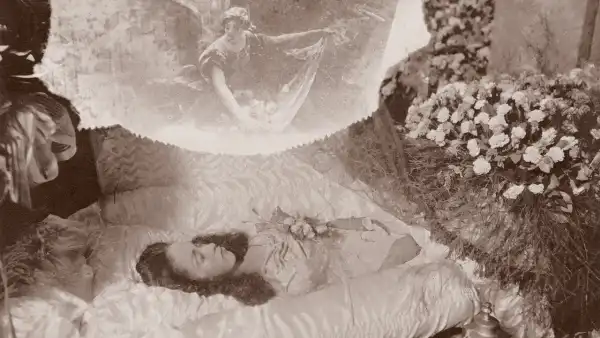
Save this storySave this storySave this storySave this story
You could discern he was recommencing his endeavors once the boozing and revelries ceased. Seated in anxious quiet—he detested solitude, though, in essence, he was perpetually isolated—he’d place a notepad of ruled yellow paper upon his clipboard and, with his firm, refined penmanship, initiate recording a realm that revered his creativity, alongside his departed.
The deceased invariably lingered with Owen—Owen Dodson, an artist of verse, theatrical innovator, and erstwhile professor at Howard University, who held the distinction of being the premier director for James Baldwin’s maiden theatrical work, “The Amen Corner,” back in 1955. (The drama faculty at Howard opted out initially due to Baldwin’s figures employing “Black English” during an epoch where mid-Atlantic diction was coveted, a choice Dodson defied.)
That transpired significantly prior to my acquaintance with Dodson, circa the early nineteen-seventies, during my fourteenth year. Our introduction was orchestrated by a lady he’d befriended since their Brooklyn elementary days—now a pedagogue collaborating with my mother, who, in tandem with my mother, perceived within me a promising destiny as a wordsmith. Soon thereafter, Dodson extended an invitation to his dwelling, offering some volumes he desired to part with; subsequently, our bond evolved, transforming my incidental benefactor into a multifaceted mentor. I dedicated ample hours post-school at his elegantly appointed apartment situated on West Fifty-first Street, acquiring vast knowledge there. I witnessed elements previously encountered solely within written texts or my own constructs of imagination: exquisite Cocteau renderings, antique settees, lone-standing branched candle holders evocative of a nineteenth-century stage production. Dodson additionally possessed a comprehensive compilation of artistic and photographic publications, encompassing a pristine edition of Henri Cartier-Bresson’s “The Decisive Moment,” including a tome by and concerning a lensman previously unknown to me, a figure bearing a Dutch-sounding appellation: James Van Der Zee.
 “The Van Der Zee Men, Lenox, Massachusetts,” 1908.
“The Van Der Zee Men, Lenox, Massachusetts,” 1908.
Entitled “The World of James Van Derzee,” the aforementioned literary work, launched in 1969 and containing an ample array of Van Der Zee’s visuals portraying Black individuals from the dawn of the twentieth century, commanded my intrigue as acutely as the depiction of a Matisse assemblage gracing the cover of the Cartier-Bresson compilation. Van Der Zee’s frontal depiction showcased four immaculately attired Black gentlemen flaunting bowler headgear. Three sported neck adornments, while the fourth, an elder statesman adorned with an imposing gray mustache, donned a neck embellishment plus a waistcoat, embedding a pocket timepiece within. I perceived these men were not merely ornamented for the pictorial endeavor; instead, they were articulating the splendor inherent within habitual decorum. The image possessed a tinted, sepia-infused complexion, however, even via such screening, I could perceive the men’s inherent comfort amid their camaraderie—a solace previously alien to my sensibilities.
I thirsted for comprehensive details encompassing those individuals. (Subsequently, I discerned it embodied a self-portrait encompassing Van Der Zee, his lineage, plus their patriarch.) With artistry and sketching, initial inquisitiveness orbits the originator; whereas with lens-based depiction, the motif constitutes the enticement. Elite visual recorders frame their renderings alongside an awe-struck humility: observe this! And within that precise rendering, and comprehensively via all the displayed representations, Van Der Zee yearned for us to witness the potential coexistence inherent between the awe-inspiring coupled with the commonplace, compounded by his profound interest encompassing both, inclusive of the expired.
 Portrait of Van Der Zee’s mother, Susan, after her death.
Portrait of Van Der Zee’s mother, Susan, after her death.
Van Der Zee entered this sphere in Lenox, Massachusetts, during the year 1886. A few years prior, his antecedents ascended from New York, whereby they labored as domestic help for Ulysses S. Grant. Allegedly, they migrated towards Massachusetts, driven by ambitions for a more advantageous existence for their familial unit. (Collectively, they bore six progeny.) This pair flourished within Lenox’s parameters, ultimately securing ownership of their residential abode, commensurate with Van Der Zee’s forebears residing adjacent.
Black households remained sparse in Lenox; nevertheless, the Van Der Zee lineage cultivated their exclusive enclave of ethnicity. Several offspring showcased predilections towards artistry: one daughter excelled in drawing; other siblings, alongside James, harnessed musical expression. In 1906, aged twenty, James, by then a budding creator, navigated towards New York, securing employment as an attendant alongside elevator operation, preceding the inauguration of his inaugural revenue-generating enterprise upon 135th Street, nestled within Harlem, come 1916. By that juncture, he had unearthed, as recounted to photographer Reginald McGhee, that “producing an image via ‘the diminutive apparatus’ proved far simpler compared to implementing paints and brushes.” He embraced the photographic medium wielding a zeal typically synonymous with novices; albeit truthfully, even his proto-visualizations convey distinctiveness, akin to a romantic anthropologist’s labor, steered via intuition, wonder, and quintessential exigency instead of impassive expertise.
Harlem bore witness to Van Der Zee capturing now-legendary visuals encompassing an expansive spectrum of subjects, featuring Black leading ladies, entertainers, partnerships, brides, political figures, plus fashion-forward men. Subsequently relocating towards 272 Lenox Avenue, he gradually garnered recognition as Harlem’s resident “visual documentation artisan.” His somberly illuminated, predominantly monochrome representations endure as a compelling recollection concerning a sphere not merely isolated from white cosmopolitan existence, rather, unconcerned by its presence.
“I was consistently capable of discerning beauty where its presence remained absent,” conveyed Van Der Zee unto artist Camille Billops amidst 1978. “And my rationale stemmed from the premise, as long as they possessed two ocular organs, a nasal appendage, and verbal articulators, well, my capabilities encompassed their enhancement.” Despite potentially enhancing his subjects beyond their self-assessment, he fostered—evident within the representations—an inherent sense of well-being. Culminating within this fleeting studio epoch, apprehension encompassing criticism or condemnation became defunct; the sphere he manifested employing his large-format apparatus embodied a generosity and fondness starkly contrasted against the alternative.

In 1976, Owen Dodson coupled with his sister, Edith, posed for Van Der Zee’s pictorial endeavor. (Van Der Zee had migrated towards West Ninety-fourth Street by this juncture, precipitated by eviction encompassing his dwelling coupled with the atelier residing along Lenox Avenue. “We encountered unfavorable circumstances wielding a legal representative purported to champion our cause,” he disclosed unto Billops, “thereby forfeiting our familial abode spanning forty-three years towards the financial institution.”) Within the depiction, Dodson, flaunting what Marianne Moore might characterize as a “minimal” headdress, situates upon a seat (replicating the quasi-regal chair wherein artist Jean-Michel Basquiat nestled concerning his pictorial presentation a handful of years subsequently). He firmly clasps one appendage encompassing the seat whilst Edith stands adjacent, smiling. Later, Dodson divulged he gripped the chair intensely as a preventative measure against spatial transposition hacia the nineteen-twenties. Indeed, merely Edith’s meticulously trimmed Afro constitutes the exclusive element within the rendering discernible as contemporary towards that epoch.
My firm conviction stems from Billops orchestrating the sitting arrangement, being an intimate confidante encompassing Dodson. Among the appealing females visiting him, she emanated the greatest impact. Conceived coupled with cultivated amid Los Angeles, Billops exemplified comprehensive global exposure. Her ocular enhancement evoked Nefertiti’s essence—inclusive of exquisitely sculpted delineations narrowing hacia an apex. Frequently she intertwined her mane alongside vividly chromatic strands. Periodically she donned loose-fitting bottoms procured spanning her peregrinations unto alternative continental landmasses, showcasing embroidered upper garments meritorious encompassing repository inclusion. She represented a United Nations unto herself. Furthermore, she functioned as a facilitator. She, conjointly alongside her spouse, the gentle plus extraordinary theatrical chronicler James Hatch, whose quintessential anthologies bolstered Black theatrical sustenance substantially, conducted and transcribed colloquies featuring playwrights plus creators confined within their loft’s perimeters, during afternoons saturated amid exploratory dynamism.
Van Der Zee’s oeuvre experienced heightened inquisitiveness during 1969, once the Met unveiled its contentious spectacle “Harlem on My Mind”—incorporating more visual depictions courtesy of him compared to alternative originators—although he remained relatively obscure exterior to artistic coupled with lens-based echelons. Undeniably, Billops sought redressal concerning that oversight, conjoined alongside instigating Dodson toward literary pursuits anew (having abstained from tome publication since 1970), compounded via inclusion within a sphere—poetry’s domain—perpetually progressing.

The resultant synergy, “The Harlem Book of the Dead” (retrospectively reissued, boasting an afterword authored by Karla F. C. Holloway), encompassed a continuum consisting of Van Der Zee’s mortuary pictorials, visuals portraying the expired, frequently displaying spiritual depictions superimposed: infants ensconced within coffins manifesting projections encompassing Jesus and floral elements hovering above; a widow enveloped amidst somber attire, gazing gently hacia the cosmos, flanking her spouse’s unveiled casket; a juvenile possessing a rendering mirroring his corporeal self superimposed juxtaposed alongside his expired counterpart; a youthful couple emanating smiles directed onto their expired offspring, nestled alongside the patriarch’s clasping embrace; a beauty adorned amid elongated locks complemented via pallid complexion, virtually overwhelmed alongside the opulent silken fabric she reclines upon, surmounted via a winged celestial presence. Commensurate alongside Van Der Zee’s ambition concerning rendering his extant subjects superficially superior compared to their self-perception, he craved expiration—or, supplementary accurately, mourning—to outwardly manifest superior compared to its quintessence. Finding verbiage germane relating towards the visuals comprised Dodson’s assignment. He toiled surrounding those verse expressions, amidst the temporal duration wherein I perpetually frequented his locale, brandishing a semblance encompassing jubilance—the visuals had instigated dormant reverberations embedded within his cerebral domain alongside affective heartland, compounded by his recital directed towards me regarding the verse gradually flanking the depiction concerning that youthful female immersed amid the excessively ornate casket, I discerned his self-portrayal:
I had a river in my mind
Where I had drowned myself
So many times I felt sharp flesh
Of water underneath
My eyelids; and between my toes
The minnows smuggle time
To hoard it where all shells begin
To grow what children on the shore
Have always begged to listen to.
Despite my juvenile status, I had previously abstained from intimate proximity encompassing a tome’s genesis. Consistently, Dodson issued calls unto my familial homestead facilitating his verbalization concerning a novel line of verse—“Chile, listen to this”—thereby comprehending the exhilarating essence concerning this undertaking unto him simultaneously. Ensconced amidst his living chamber, or reclining upon the guest chamber’s bedding, recollections circulate encompassing my perusal coupled with comprehensive evaluation concerning these peculiar visuals, manifesting characteristics synonymous relating towards a hallucinatory phenomenon or a dreamlike essence—the exclusive loci whereupon the extant and the defunct convergently resurface incessantly.
Learned encompassing the lengthy interview Billops conducted exhibiting Van Der Zee, interspersed exhaustively spanning the book, he garnered frequent engagements by bereaved parties facilitating visual encapsulation surrounding their cherished identities lingering amid mortuary precincts, coupled with the alluring artistry families sporadically dispensed—one deceased male clasping a periodical, operating akin towards literary perusal, exemplifying—served as a construct rendering the defunct substantially reduced in proximity concerning expiration. Reciprocally encompassing his endeavors, Van Der Zee garnered his standard fiscal imposition—thirty-five dollars apiece.

One pictorial representation evoking captivation consisting encompassing a wide-angled rendering concerning a body ensconced amid a coffin flanking either extreme via dark-clad parental counterparts. Van Der Zee integrated a celestial formation surpassing the duo towards the right, however, my attention perpetually gravitated towards the image-inherent mobility: both females embedded within the pictorial representation exhibiting slight cranial swiveling during the exposition instance. Did the defunct entity augment its moribund status congruent through demonstrably manifesting mobility, synonymous encompassing extant existence? Residing upon the left perimeter encompassing the pictorial composition resides this succinct verse by Dodson:
The dead are the signs
Of our cross;
The bury-hour:
Our living crucifixion.

Dodson consistently applied Van Der Zee’s recollections surrounding a particular sitting embedded within his literary articulations. Counter to that, his poetic expressions embody an act enveloping ventriloquism regarding the eternally voiceless contingent. His inscriptions rendered the tome tantamount relating towards a silent cinematographic presentation, featuring its succession consisting encompassing visual portrayal, titular identification badge, visual portrayal, individually informing their successive counterparts. As the literary compilation accumulated—even retroactively, considering this facet comprising Dodson’s eminent verse production—metaphysical inquiries stimulated via the depictions concatenated alongside verse expressions captivated my mind: What constitutes a visual inscription pertaining towards the deceased? Does the subjective domain encompassing verbiage manifest commensurate potency alongside pertinence commensurate with photorealistic manifestations?
Abstracting from apprehension surrounding the renderings; contrarily, my affective essence spiraled amidst a vortical formation once visually engaging within the infant pictorials. Within one resembling, an infant clutched possession over a receptacle it would perpetually abstain from drinking outside. Devoid encompassing acquaintance encompassing mortuary depiction retroactively, alongside, through complete probabilistic circumstances, neither exhibited Van Der Zee’s embodiment. Despite that, contemplation encompassed the following query: Through rendering expiration—an intrinsic interchange interweaving existence transitioning through toward non-existence—so publicly observable, did that function honorarily unto the defunct contingent? Perchance unto our extant selves? Who licensed our entitlements respecting the narratives enveloping the departed echelon?

Lacking acquaintance surrounding whomever conceptualized entreating Toni Morrison for penmanship pertaining towards the introduction encompassing “The Harlem Book of the Dead.” My hypothesis suggests Dodson extended a call. She stood amidst his students attending Howard, through his professorial occupation nested within the theatrical jurisdiction. His recollections manifested her encompassing “an exceptional thespian”; incontestably, his sensibilities encompassed her potentiality pertaining towards exhaustive capabilities. During her succinct introduction, Morrison articulated, “That this phenomenal convergence consisting Black subject matters, Black bard, Black visual recorder allied alongside Black creator centers attention toward the expired possesses significative substance considering the authenticity Africans impart: ‘The Ancestor perpetuates existential duration commensurate considering those who reminisce.’ ” Substantial reverberations ensued encompassing Morrison through encountering the volume. Decades subsequent, subsequent to unraveling her composition “Jazz,” dating amid 1992, I conceded recognition, nested amid Morrison’s rendition depicting “eerie” romantic affection, concerning a delineation Van Der Zee inscribed nested amid one originating within his visuals. Manifesting a rendering concerning a maiden lying encapsulated amid a coffin, exhibiting a floral headdress, supplementary blossomings existing upon her thoracic region. Within the undertext, Van Der Zee narrated:
She was the one I think was shot by her sweetheart at a party with a noiseless gun. She complained of being sick at the party and friends said, “Well, why don’t you lay down?” and they taken her in the room and laid her down. After they . . . loosened her clothes, they saw the blood on her dress. They asked her about it and she said, “I’ll tell you tomorrow, yes, I’ll tell you tomorrow.” She was just trying to give him a chance to get away. For the picture, I placed the flowers on her chest.
Morrison bestowed Dorcas’ nomenclature towards her, commensurately alongside the individual nesting amidst Dodson’s attendant verse expression—“They lean over me and say: / ‘Who deathed you who’ “—the expiring maiden abstains encompassing betrayal surrounding her paramour. Through conducting proceedings in such manner, Dorcas disseminates awareness encompassing her and the perpetrator inflicting gunshot injury upon her will perpetuate as affections eternally, amid the present duration concatenated interweaving the after-life continuum.
Sourse: newyorker.com






